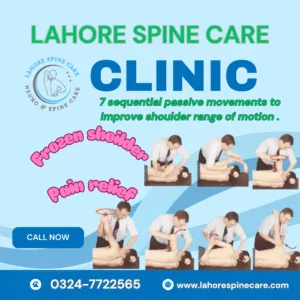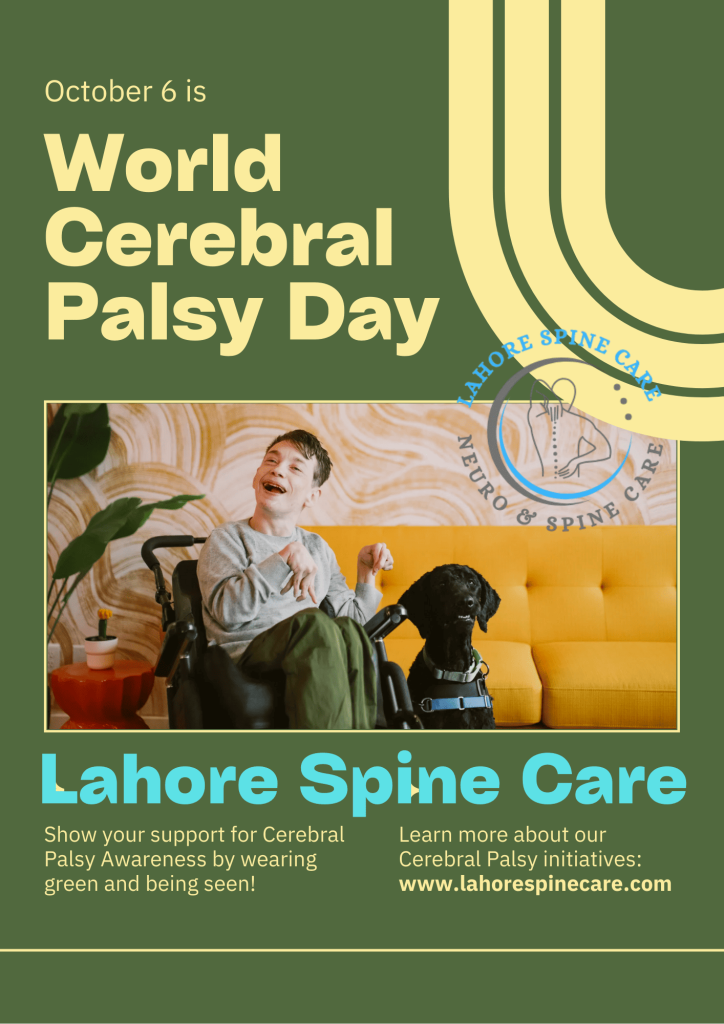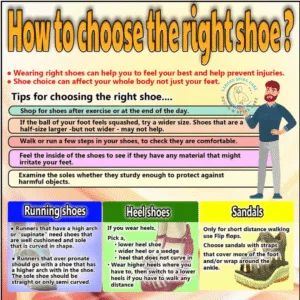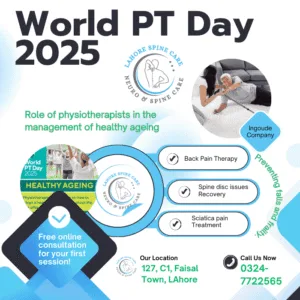
The Spencer Technique for Shoulder Pain Relief: How It Works and What to Expect
The Spencer Technique is one of many options of treatments that physical therapists and osteopathic

Table of Contents
Toggle
Cerebral palsy awareness week is observed globally every year on 6 th of October which is world CP day. Since it is a global day of action, the goal of World CP Day is to bring attention to the challenges faced by individuals with CP and advocate for the change in which they with full rights, equal opportunities and access to everything, like everyone else.
This year’s theme is the Uniquely CP which is a reminder that, although many people with CP are confined in a wheelchair, their disability does not have to sum them up.
Cerebral palsy (CP) refers to a group of non-progressive neurological disorders that affects movement, muscle tone or posture. It results from the injury to a growing brain, most often, the harm occurs before or at birth or during the early years in a child’s development. As with most neurological disorders, there is no known cure for CP, however with early intervention, therapy, and specially assigned care, children with this disease can enjoy a significantly better quality of life.
In this blog, the reader will learn what cerebral palsy is, possible causes, different types, and symptoms, as well as ways for parents and caregivers to support a child with CP.
Cerebral palsy is defined as a number of conditions that are characterized with impairments that are mainly motor. The word “cerebral” comes from the brain and the word “palsy” means weakness when using the muscles. CP children suffer from brain injury or abnormal development that takes place in the fetal stage, during childbirth or a few days or weeks after birth leading to the child failing to regulate their muscles.
CP does vary as a result of the extent of brain injury and localization of brain damage to different regions of the brain affects each child. Some children are likely to have minor motor problems while others may have severe developmental disabilities that affect their motor systems throughout their lives.
The cause of cerebral palsy is still not well established but some causes make a child have high probabilities of developing CP. These include:
Premature birth: Infants who are most vulnerable include those born at less than 32 weeks of gestation.
Asphyxia which results from lack of oxygen at the time of birth can cause brain damage.
Infections during pregnancy: The rubella, chickenpox, cytomegalovirus may harm the fetal brain because the organ starts developing at this stage.
Multiple births: Children who are twins, triplets or other multiples have a higher risk of cerebral palsy.
Brain injury: Cerebral palsy can also occur due to other types of brain damage that may be inflicted through trauma or illnesses early in life such as meningitis.
There are different subtypes of cerebral palsy determined by the motor dysfunction a child has. These types include:
Spastic Cerebral Palsy: This is seen in up to 70-80 percent of children with CP where muscles have high tone, why it may be difficult to move. It can be hemiplegia when the child is affected on one side of the body, diplegia for both legs, and quadriplegia affecting all four limbs.
Dyskinetic Cerebral Palsy: This type involves movements that are involuntary and maybe twisting or repeating movements in a cycle of days. Gross motor skills – children may be unable to adequately coordinate their arms, legs or/and hands.
Ataxic Cerebral Palsy: A less common type which involves coordination and, particularly, spatial orientation and causes staggering, unsteady gait.
Mixed Cerebral Palsy: cpt occurs in different forms and may present in one form or another; some children present with symptoms of more than one type of CP; for example, both spastic and dyskinetic.
Symptoms of this disorder start to show early in childhood and sometimes during infancy. Although symptoms vary depending on the type and severity, common symptoms include:
Delayed milestones: Being unable to sit, stand, or walk as required by advancing age.
Abnormal muscle tone: Muscle tone abnormalities: High muscle tone, more commonly referred to as stiffness, or the lack of tone, or low muscle tone, often referred to as floppiness.
Coordination and balance issues: Some of the symptoms include incoordination movement, delays in handling small objects, walking or crawling.
Speech difficulties: As a result of C P difficulty in organising the muscles behind speech makes it a hurdle when conveying a message.
Seizures or intellectual disabilities: It is noteworthy that some children with CP and develop seizures or they may have low cognitive ability.
It is not easy to grow a child with cerebral palsy but, it’s very possible to grow children with CP with happy and fulfilling lives. Here are ways to support their development:
Physical Therapy: Customers opt for it with a goal of strengthening, flexibility, balance, and overall body coordination.
Occupational Therapy: Supports the child in acquisition of daily care needs such as feeding, dressing and Playing.
Speech Therapy: Helps children with CP who have problems with speech or swallowing.

The Spencer Technique is one of many options of treatments that physical therapists and osteopathic

How to choose the right shoe for spine health is more important for spine health

World Physiotherapy Day 2025 is celebrated every year on September 8 in the global physiotherapy

Clinical Impact & Professional Excellence Being in the field of practice with many years of

On the 14th of August each year, Pakistan proudly celebrates its Independence Day, an event

Who is Dr Ejaz Danish? Dr. Ejaz Danish is a physiotherapist based in Lahore and
LAHORE SPINE CARE is proudly powered by WordPress